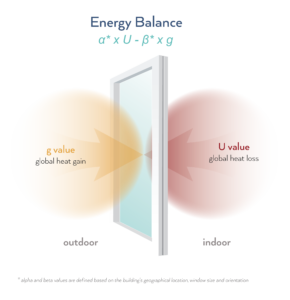
Energy balance: the right approach to assess the energy performance of windows
- Home
- Buildings and construction
- Energy balance: the right approach to assess the energy performance of windows
Ensuring a proper assessment of the energy performance of windows when implementing the revised EPBD
The revision of the Energy Performance of Building Directive[1] offers a unique opportunity to the European Commission to instruct Member States on how to optimise the energy performance of national building stocks and thus to contribute to achieving a zero-emissions building stock by 2050. Simply by way of a reviewed and more appropriate methodology to assess the energy performance of windows, major savings can be achieved across the EU.
Why is it urgent to better evaluate windows’ performance?
The main functions of windows and facades are to let daylight into buildings and to ensure a visual connection with the exterior. As elements of the building envelope, high-performance windows contribute to the insulation of the building and deliver energy savings. Moreover, the transparency of glazing offers a unique feature to windows, that is to manage solar energy that heats interior and minimizes energy demand.
Today, the assessment of the energy performance of windows in national cost-optimal calculation methods is too often merely based on insulation properties[2], i.e. the thermal transmittance (U-value). The U-value alone gives an inaccurate picture of windows’ performance as it disregards the substantial energy impact of solar heat gains. As a consequence, most of the cost-optimal calculations underpinning minimum performance requirements in Member States, result in markets structured around sub-optimal window solutions and a less performing building stock.
In order to ensure a proper assessment of the energy performance of windows, heat gains (g-value) have to be considered and balanced with heat losses (u-value), as it is already the case for new construction[3]. This is the only way to minimize heating demand but also to limit cooling needs.
How to assess the energy performance of windows?
The energy balance of a window is the most accurate method to assess its energy performance. It is an equation that factors in the heat gains and heat losses and is weighted by the climatic conditions. Only an assessment based on the energy balance allows to find the most adequate windows[4].
- Member States shall use the energy balance to set minimum energy performance requirements for windows and glazed areas.
- Glass for Europe calls on the European Commission to include in its EPBD guidelines a recommendation to Member States to use the energy balance.
What is needed in the EPBD implementation guidelines?
Member States should consider using the ‘energy balance’ methodology for determining cost-optimal solutions for windows and glazed areas. The energy balance equation is the balance between the heat gains and heat losses that determines the most appropriate glazing solution for a given building.
The energy balance of a window:
- Is the balance between the heat gain (g value) and heat losses (Uw-value);
- Needs to consider local climatic conditions;
- Should consider different standard window size;
- Can consider the orientation (North, East, South or West) which impacts solar exposure.
It must be noted that applying the energy balance is the only way to be fully compliant with the revised EPBD (Annex 1), which requests Member States to consider the positive impact of ‘passive heating, passive solar systems and solar protection, local solar exposure conditions and natural lighting’, while updating their calculation methodologies.
How is the energy balance affecting energy demand in real life?The two examples below analyse the minimum requirements set for windows replacement applicable in Strasbourg and Athens[5]. These examples illustrate that using the thermal transmittance (Uw-value) only, leads to a systematic under-estimating of buildings’ energy needs, compared to what happens in real life.
Thanks to the use of the energy balance methodology, potential savings linked to new windows are better evaluated and windows offering the best mix of insulation and solar energy transmittance can be identified. |
||||||||||||||||
[1] Directive (EU) 2018/844, amending Directive 2010/31/EU
[2] Minimum performance requirements for window replacement in the residential sector, ECOFYS, 2017.
[3] In new buildings, architect and building engineers already take into account the heat gains delivered by transparent components of the envelope.
[4] The energy balance was recognised as the only effective way to assess the energy performance of windows in the Eco-design preparatory study on windows (ENER LOT 32), ift Rosenheim, 2015.
[5] The energy balance model used for the calculations is presented in the Lot32 Ecodesign of windows product (2015) commissioned by the European Commission. All calculations and energy demand numbers are based on this model.
[6] It must be noted that such a window can be considered energy-efficient for Strasbourg but is not either the highest performance available nor sold in this region of France. Triple glazing with solar control properties, provides even more savings.




